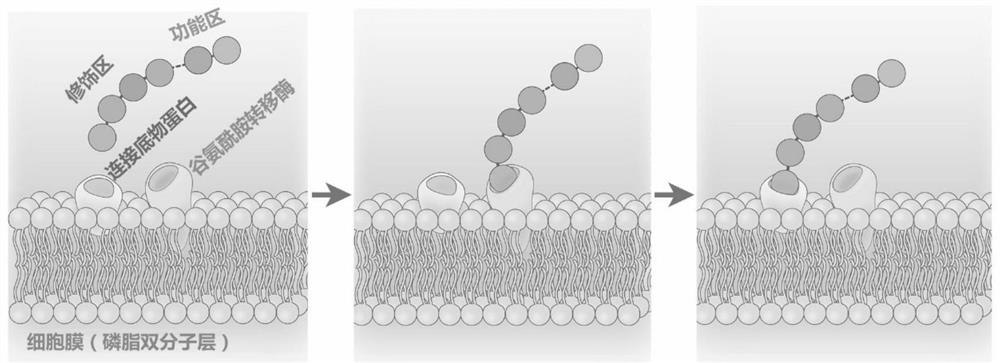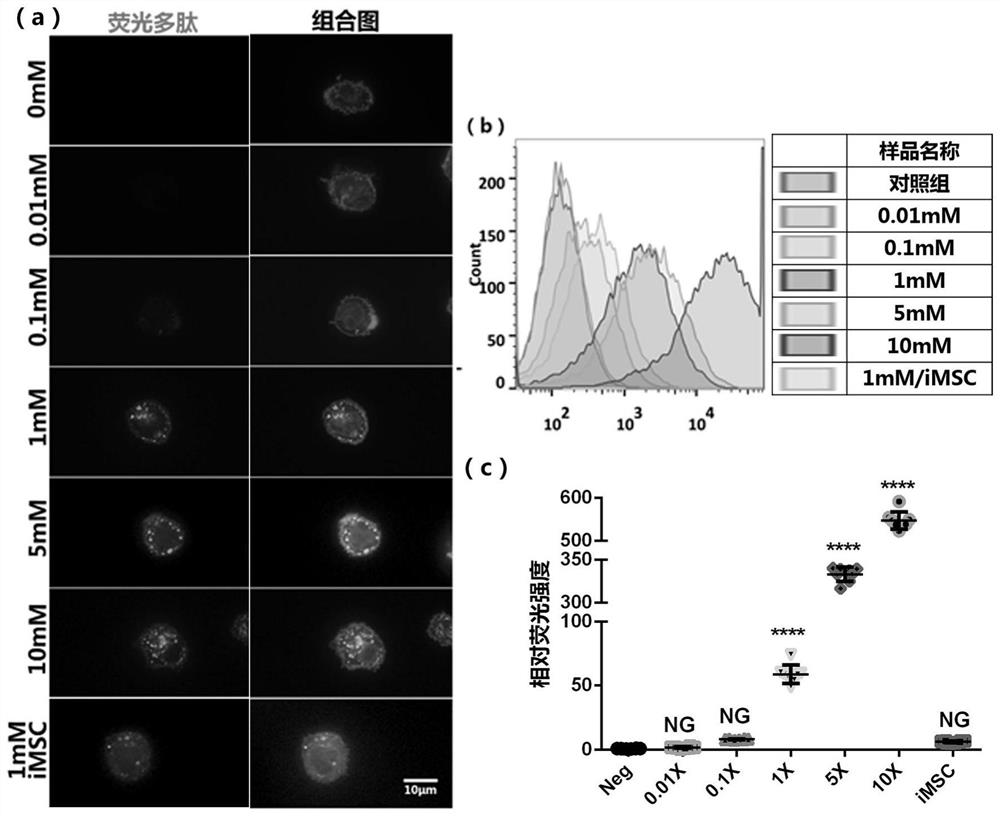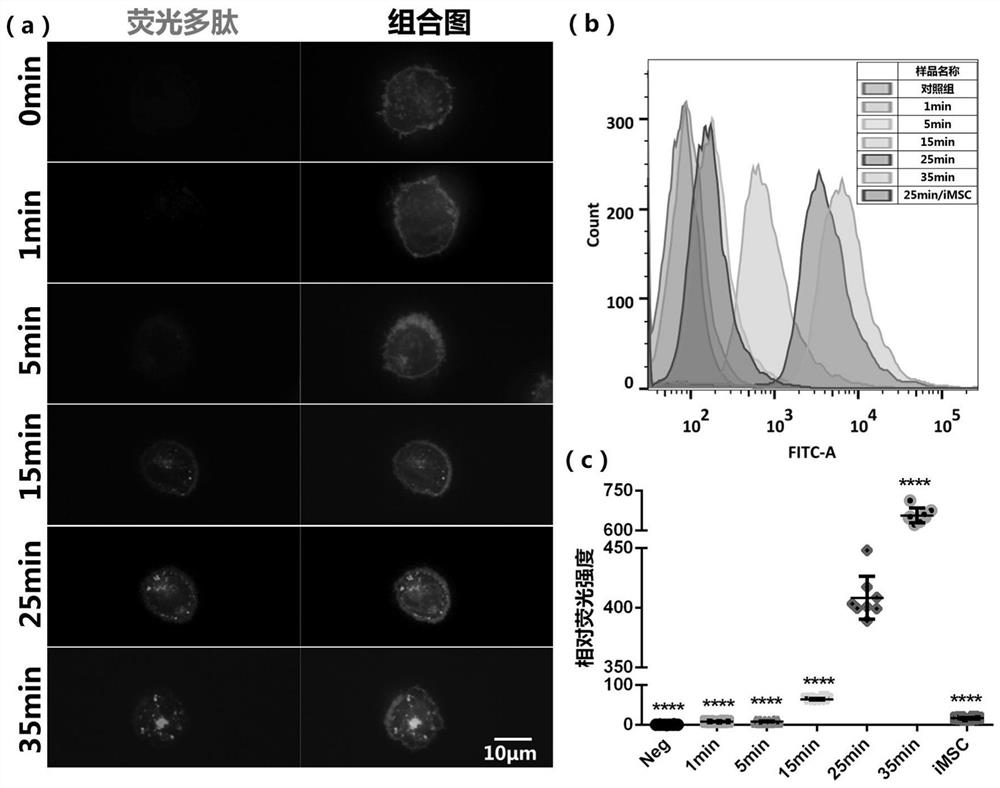Cell membrane surface modification method mediated by transglutaminase
A technology of glutamine and transaminase, which is applied in the field of biomedical engineering, can solve the problems of long half-life, complicated process, and high requirements for the treatment of modified target substances, and achieve the effect of short operation cycle and reduced inefficiency
- Summary
- Abstract
- Description
- Claims
- Application Information
AI Technical Summary
Problems solved by technology
Method used
Image
Examples
Embodiment 1
[0058] Example 1, Cell Membrane Surface Modification Mediated by Transglutaminase
[0059] The basic principle of the cell membrane modification of the present invention: under the catalysis of transglutaminase on the cell membrane, the modification is covalently connected to the cell membrane through glutamine ( figure 1 ). The target cells and modifiers used in this example are as follows:
[0060] Target cells: adipose-derived human mesenchymal stem cells.
[0061] Modification: FITC-labeled polypeptide GQLKHLEQQEG (SEQ ID No. 1, ie functional polypeptide), wherein the modified region is GQLKH; the functional region is LEQQEG. The control polypeptide is GNLRHLENNEG, in which the substrate amino acid residues of transglutaminase are replaced by N and R, so that the polypeptide no longer has the ability to be recognized by transglutaminase. The control polypeptide is used to exclude the influence of the polypeptide's own characteristics on the modification effect .
[006...
PUM
 Login to View More
Login to View More Abstract
Description
Claims
Application Information
 Login to View More
Login to View More - R&D
- Intellectual Property
- Life Sciences
- Materials
- Tech Scout
- Unparalleled Data Quality
- Higher Quality Content
- 60% Fewer Hallucinations
Browse by: Latest US Patents, China's latest patents, Technical Efficacy Thesaurus, Application Domain, Technology Topic, Popular Technical Reports.
© 2025 PatSnap. All rights reserved.Legal|Privacy policy|Modern Slavery Act Transparency Statement|Sitemap|About US| Contact US: help@patsnap.com



